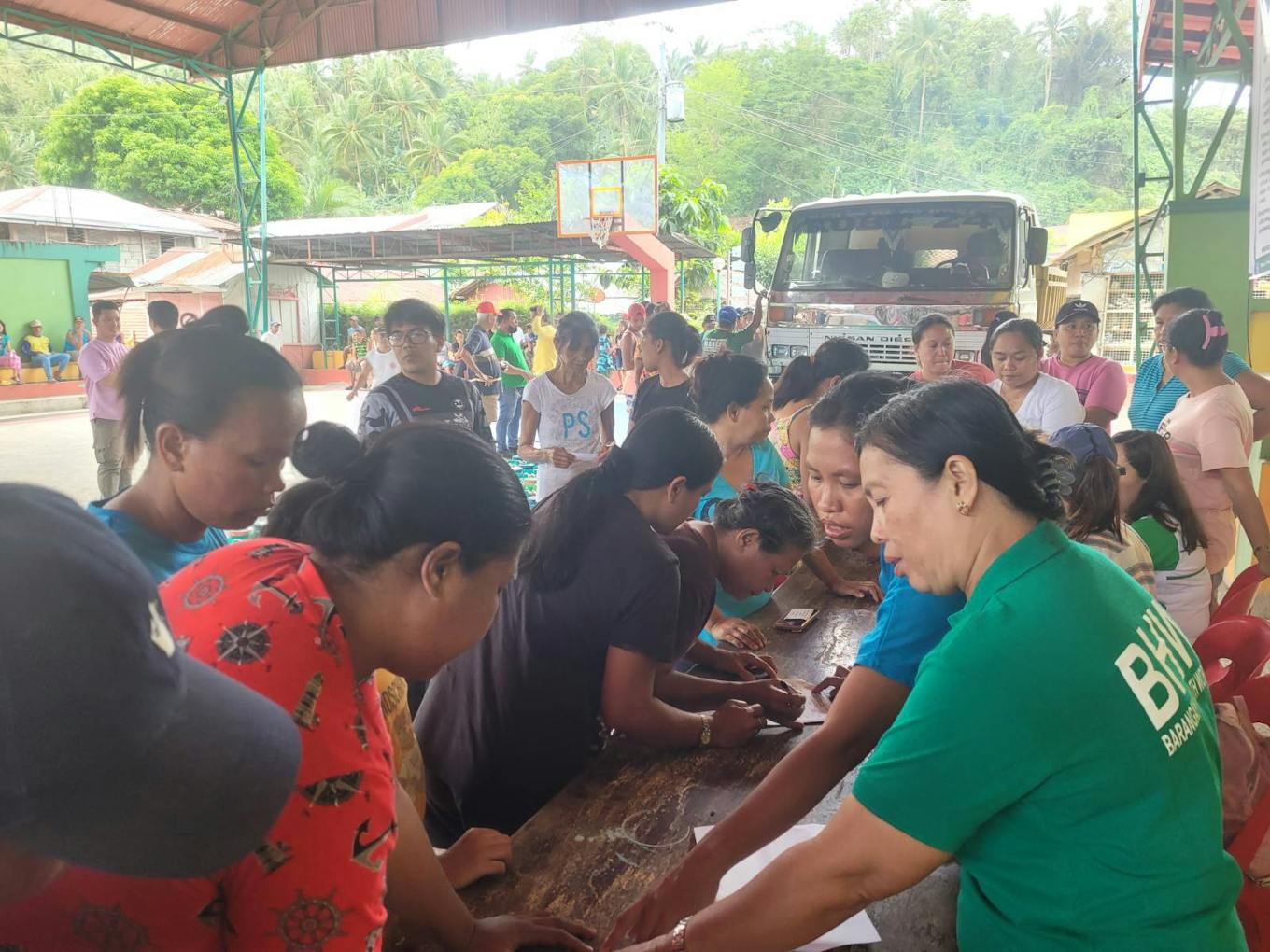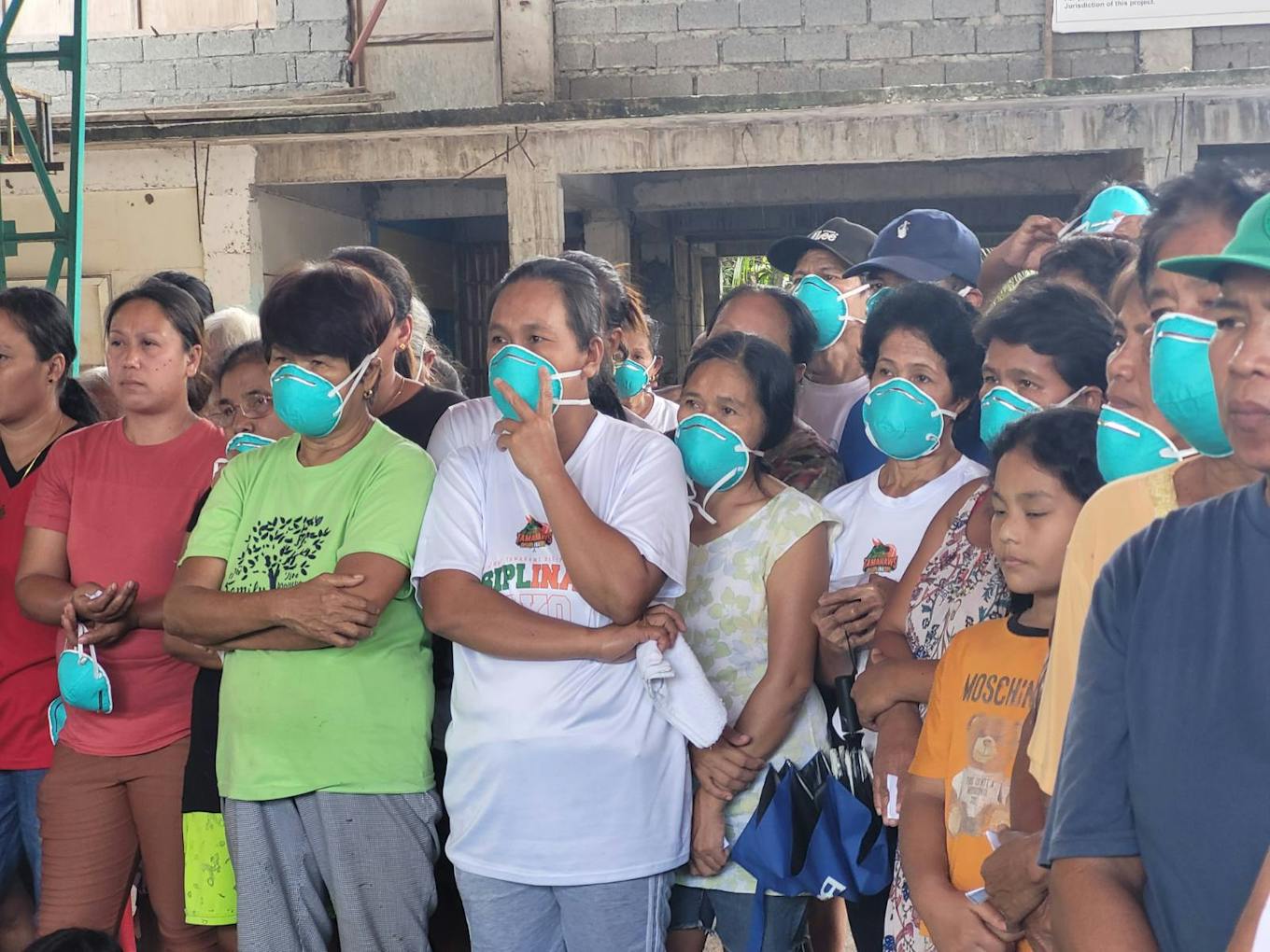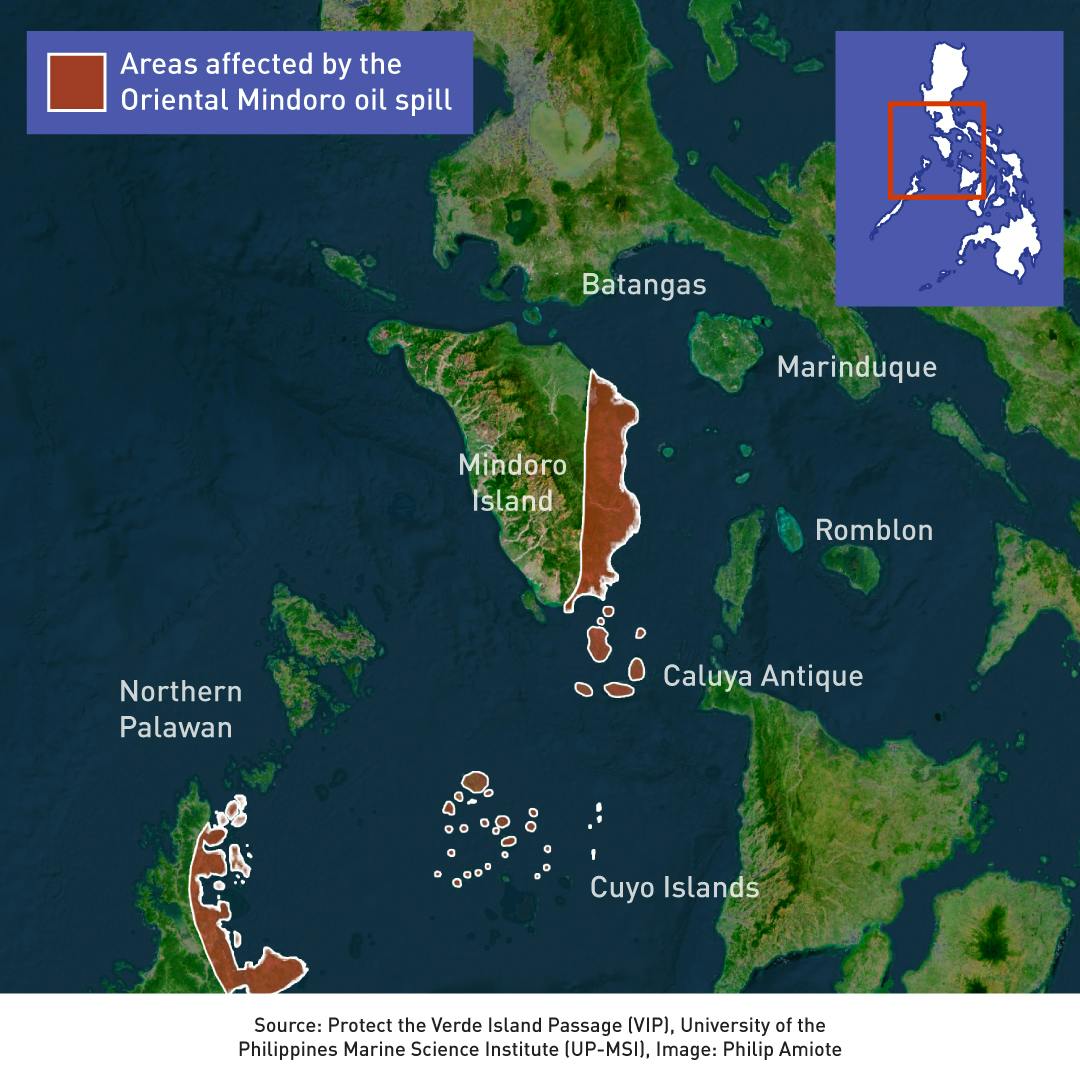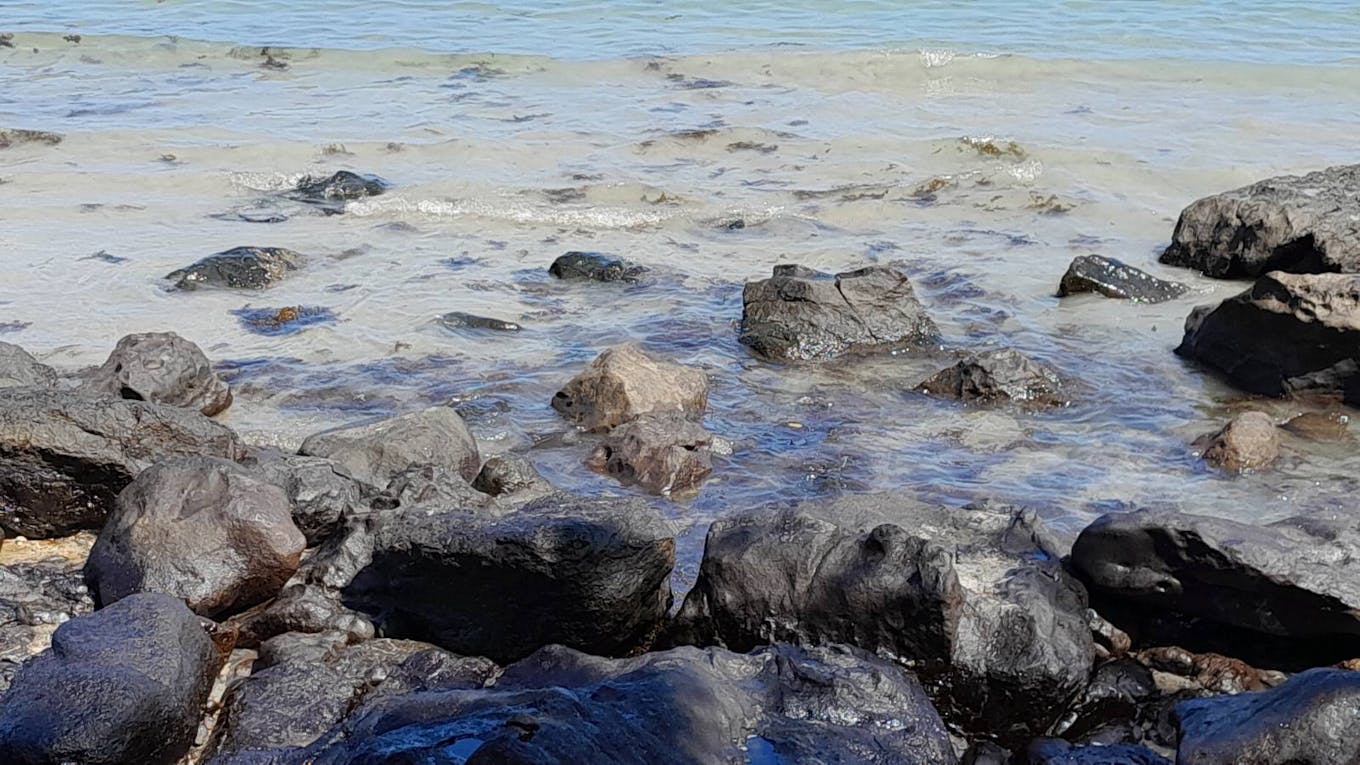Jennifer Jaqueca, a fisherwoman living in the coastal town of Pola, Oriental Mindoro in the Philippines is worried. Last month, an oil tanker, the MT Princess Empress, sank off the coast of the province she lives in, causing a massive oil spill. The local government has since ordered residents like Jaqueca to put activities such as fishing on hold for the next six months – a duration too long for anyone to bear as many depend on such activities to earn a living.
To continue reading, subscribe to Eco‑Business.
There's something for everyone. We offer a range of subscription plans.
- Access our stories and receive our Insights Weekly newsletter with the free EB Member plan.
- Unlock unlimited access to our content and archive with EB Circle.
- Publish your content with EB Premium.
It is the first large-scale fishing ban implemented in Pola, home to almost a thousand fisherfolk who rely solely on the industry for their livelihoods. Jaqueca tells Eco-Business that the current restriction extends to sale of any kind of seafood, as long as they are caught from the waters of Oriental Mindoro, due to health concerns.
The 43-year-old, who has a young daughter, started doing laundry for neighbours to earn some extra income, but has had to stop as she realised that the people around her were struggling too, and had nothing to pay her. They are currently living on relief goods provided by the local government.
“The restrictions are worse than those implemented during the two-month lockdown brought about by the Covid-19 pandemic,” she lamented.

Residents in Pola applying for government relief provisions. Image: Paul Jaysent Fos
Current estimates show that the oil spill from the industrial incident, which happened on 28 February, could endanger over 20 marine protected areas. Oriental Mindoro has 33 marine protected areas, spanning a total area of 6,000 hectares, equivalent to 138 professional basketball courts. Apart from fishing, the coastal and marine waters are used for transportation, navigation, and tourism.
The sunken tanker was carrying about 800,000 litres (210,000 gallons) of industrial oil.
On Thursday, the local government of Pola said that it will discuss the possibility of filing a lawsuit against RDC Reield Marine Services, the owner of MT Princess Empress. Residents have been hit by dizziness and fever as the oil spill blankets the coast of the Philippine island. Environmental watchdog Greenpeace said that the burden of the oil spill must be on companies responsible, not the people.
At a press briefing, Jefferson Chua, campaigner for Greenpeace, said that the authorities seem to be struggling to make RDC accountable for the disaster.
Reports indicate that the company took five days before they agreed to meet with the government, and they have yet to agree to shoulder the costs for damages to the marine reserves damaged by the spill. RDC, which insured the sunken ship for US$1 billion, according to Maritime Industry Authority, tapped two contractors to assist in the clean-up.
“We need to see the government standing with the communities [affected] and enforcing measures that will ensure that companies concerned go beyond a ‘clean-up’ and pay reparations for the environmental destruction and its impacts on people,” Chua said.
“The payment must include the costs due to loss of livelihoods and the destruction of [environmental] ecosystems, as well as take into consideration short and long term health impacts. Anything less is shortchanging the communities.”
The department of health has recommended that residents in Pola wear face masks and protective equipment when joining the clean-up drives.

Fisherfolk living within 100 meters from the affected area were required by health officials to wear face masks to avoid having a lung problem due to the smell of the oil. The government promised to provide them face masks and clean potable water. Image: Paul Jaysent Fos
‘An ecological nightmare’
The oil spill may have destroyed about 36,000 hectares of coral reefs, mangroves, and seagrass in Oriental Mindoro, as of 4 March, according to the latest University of the Philippines’ Marine Science Institute Bulletin.

Areas in Oriental Mindoro that were affected by the oil spill. Image: Philip Amiote / Eco-Business [Click to enlarge]
The Protect the Verde Island Passage (VIP), a coalition that seeks to protect the green corridor, said that the oil spill could threaten the marine biodiversity hotspot encompassing Mindoro Island, Batangas, Marinduque, and Romblon. It described the incident as an “ecological nightmare”.
The local government of Pola, Naujan, and Pinamalayan confirmed that there are sightings of oil residue in their coastal barangays prompting them to declare a “state of calamity”. These towns are within the Verde Island Passage’s corridor, known to have the highest concentration of marine species in the world.
“In transporting a highly polluting substance across the Verde Island Passage and its surrounding waters, these companies deliberately cruise through and place at risk fragile marine ecosystems and the livelihood of all who depend on them,” said Fr. Edwin Gariguez, lead convenor of Protect VIP, in a statement.
Apart from Verde Island Passage, the oil spill may spread to Cuyo Islands and closer to northern Palawan within the week, as well as three coastal barangays in Caluya, Antique, after earlier reported sightings of oil residue.

Limestones and rubble in coastal areas of Pola, Oriental Mindoro have been covered by oil sludge due to the oil spill. Image: Paul Jaysent Fos
There are “long-lasting” effects from the damages of an oil spill, said Paul Horsman, strategic advisor of Greenpeace, citing a similar accident that happened in Alaska in 1989, when a super oil tanker spilled about 40 million litres (10.8 million gallons) of crude oil.
“Thirty years after that spill, you can still find Exxon Valdez oil in the sediment around the area. When the cameras are gone, the environment is trying to recover. That’s when the more long-term effects begin to be felt by the environment and by human communities who have to live with it for a longer term,” said Horsman.
There have been previous incidents in the Philippines, when major oil spills have impacted fisherfolk. Three years ago, about 48,000 litres of oil leaked into the waters of Iloilo after an explosion at a power barge, affecting an area of 1,200 square metres. In 2006, M/V Solar I carrying 2.4 million litres of oil sank near the Guimaras coast, destroying thousands of hectares of coral, mangrove, seaweed, and fish ponds.
Want more Philippines ESG and sustainability news and views? Subscribe to our Eco-Business Philippines newsletter here.








